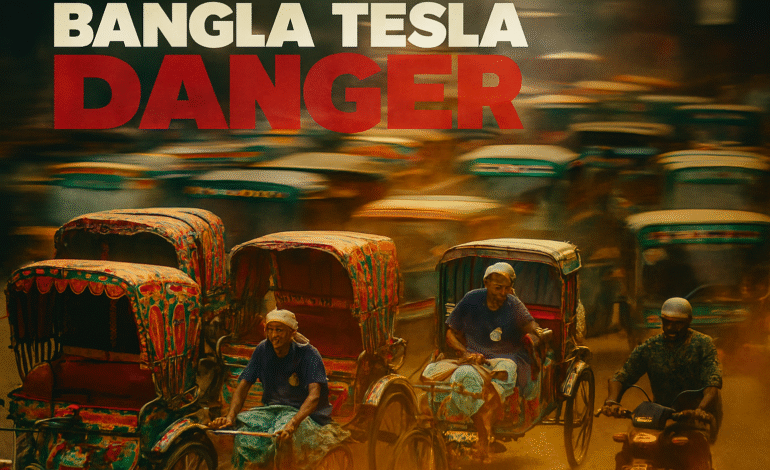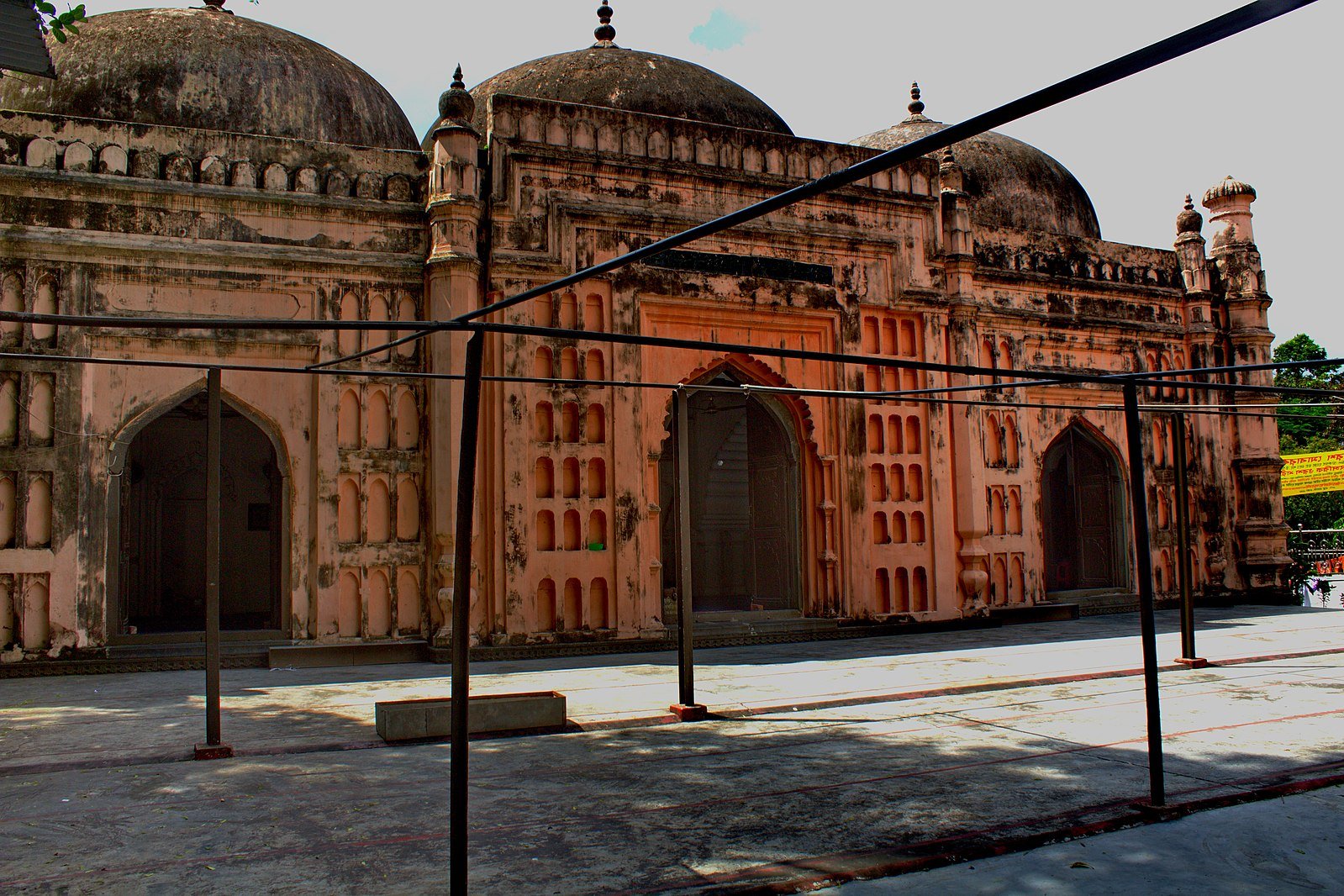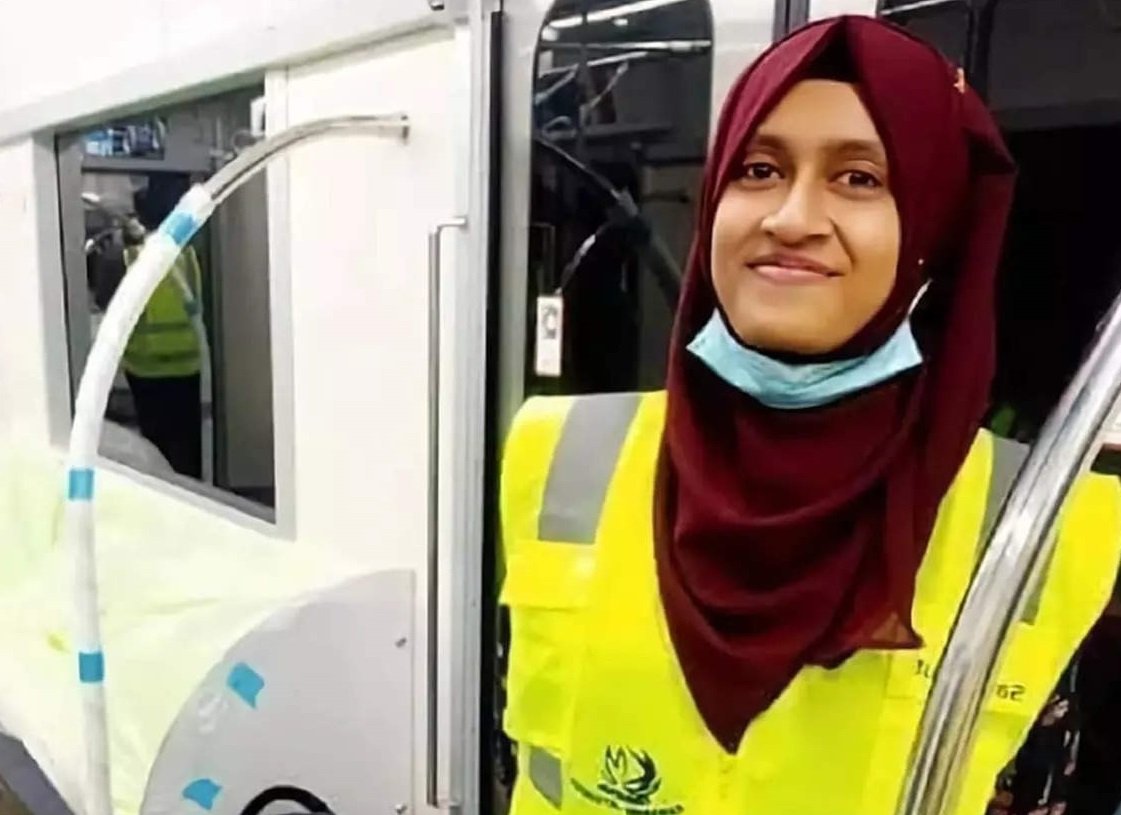Bangla Tesla: A Joy Ride or Curse

Bangla Tesla: A Joy Ride or Curse
Bangla Tesla represents one of Bangladesh’s most widespread yet problematic transport solutions. The battery-operated auto-rickshaw, originally introduced as an eco-friendly alternative to traditional fuel-driven vehicles, quickly gained popularity due to its affordability and accessibility. However, the rapid and largely unregulated expansion has turned them into a symbol of urban disorder. Followed by political indecision and regulatory shortcomings.
Instead of reducing environmental and transport challenges, the rapid increase of Bangla Teslas has led to rising road accidents, growing pressure on hospitals, and the collapse of already fragile urban planning. What was once hailed as an eco-friendly transport solution and a step toward sustainable mobility has now become a pressing public safety and policy concern.
The Rise of the Bangla Tesla
The story of the Bangla Tesla began when Bangladesh phased out diesel-powered three-wheelers in favor of electric alternatives. Initially, the move was applauded as an environmentally responsible step. Cheap, accessible, and quiet, these vehicles quickly spread across rural and urban landscapes.
But what started as a green dream soon turned into a traffic nightmare. Without proper licensing, regulation, or road planning, the number of battery-operated rickshaws exploded. Today, there are an estimated six million Bangla Teslas in Bangladesh, with Dhaka alone hosting around 1.2 million.
In a city with only 7.5% road coverage, such uncontrolled growth has pushed traffic congestion, accident rates, and public frustration to record levels.
A Deadly Toll on Roads
Behind the humor lies tragedy. According to Bangladesh Jatri Kalyan Samity, last year alone, Bangla Teslas were involved in 870 accidents that caused 875 deaths and 1,779 injuries. By April this year, the count had already reached 371 accidents, 378 deaths, and 709 injuries.
Hospitals across the country are reporting a steady influx of accident victims. Upazila health complexes treat three to five injured people daily, while division hospitals receive 20 or more cases every day. Orthopedic wings are so overburdened that some have jokingly been referred to as “Tesla Trauma Units.”
The statistics highlight a grim reality: the Bangla Tesla may be electric, but its human cost is shockingly high.
Bureaucracy on a Joyride
Despite the scale of the crisis, government action has been lukewarm at best. The interim government claims the issue of regulating auto-rickshaws lies between city corporations and the local government ministry. This bureaucratic ping-pong — where responsibility shifts back and forth without results — has become a defining feature of the Bangla Tesla saga.
Efforts have been made to design “safer” models with better braking systems, but critics argue this is a band-aid solution. Moving old rickshaws “out of Dhaka,” as one adviser suggested, is no solution either. Relocating chaos does not eliminate it; it only spreads the problem to rural areas.
The irony is clear: while governments across the world invest in buses, metros, and sustainable public transport, Bangladesh has legalized what experts call “a suicidal attempt” — normalizing chaos by giving citizenship to disorder.
Conflict on the Streets
The problems don’t stop with accidents. The rise of the Bangla Tesla has also triggered violent clashes. When elite neighborhoods like Gulshan tried banning the vehicles, drivers retaliated with protests that turned violent. Pedestrians, bikers, and even shopkeepers have found themselves caught in the crossfire.
Within the transport community, rivalries run deep. Easy-bike drivers clash with auto-rickshaw drivers, CNG drivers resent both groups, and everyone collectively despises the traffic police. The absence of a coherent transport policy has turned streets into arenas of constant tension.
Data Blackout and Denial
Even institutions meant to provide clarity have failed. The Accident Research Institute (ARI) at BUET, tasked with analyzing road safety, admitted it cannot provide updated data because police reports are incomplete. Many accidents never reach official records, leaving policymakers blind to the true scale of the crisis.
This lack of transparency fuels further distrust and makes effective regulation nearly impossible. It also allows vested interests and informal unions of drivers to resist reforms without facing accountability.
Why the Bangla Tesla Persists
The persistence of the Bangla Tesla boils down to three factors: affordability, availability, and political appeasement. For millions of families, these vehicles provide livelihoods. For millions of commuters, they are an accessible — if dangerous — transport option. And for politicians, they represent a powerful voting bloc that cannot be easily antagonized.
This toxic mix of economics, politics, and inertia ensures that every attempt at regulation collapses. Instead of long-term planning, governments resort to short-term patches, hoping to ride out the chaos rather than confront it head-on.
The Way Forward
Experts argue that the solution is not to ban Bangla Teslas outright but to restructure the entire transport system. Which can be attained by expanding and modernizing bus networks. Freeing up footpaths and removing illegal structures. Introducing strict licensing and quality control for vehicles and Ensuring proper training for drivers.
Also, implementing route rationalization to avoid overcrowding. Most importantly, building political will to enforce decisions without caving to populist pressure.
Bangladesh does not need more three-wheeled chaos machines. It needs a comprehensive, modern, and safe public transport system that serves as the backbone of mobility.
A Symbol of Bangladesh’s Urban Dilemma
The Bangla Tesla is more than just a vehicle. It is a symbol of Bangladesh’s struggle with rapid urbanization, poor planning, and weak governance. It embodies the paradox of a nation that embraces innovation but neglects regulation, that celebrates quick fixes while ignoring systemic reform.
Until meaningful change occurs, the streets of Dhaka and beyond will remain hostage to these battery-powered hazards. They will continue to deliver passengers from one corner of the city to another — and occasionally, to the emergency ward.
In the global conversation about electric mobility, Bangladesh’s Bangla Tesla stands out as both cautionary tale and dark comedy. Where the world debates AI-driven cars, Bangladesh has built DIY death machines powered by washing machine motors and ambition.
The choice now is clear: continue down the road of chaos, or seize the moment to rebuild transport with vision, safety, and sustainability in mind. Until then, the Bangla Tesla will remain what it is today — silent, deadly, and unstoppable on the streets of Bangladesh.







